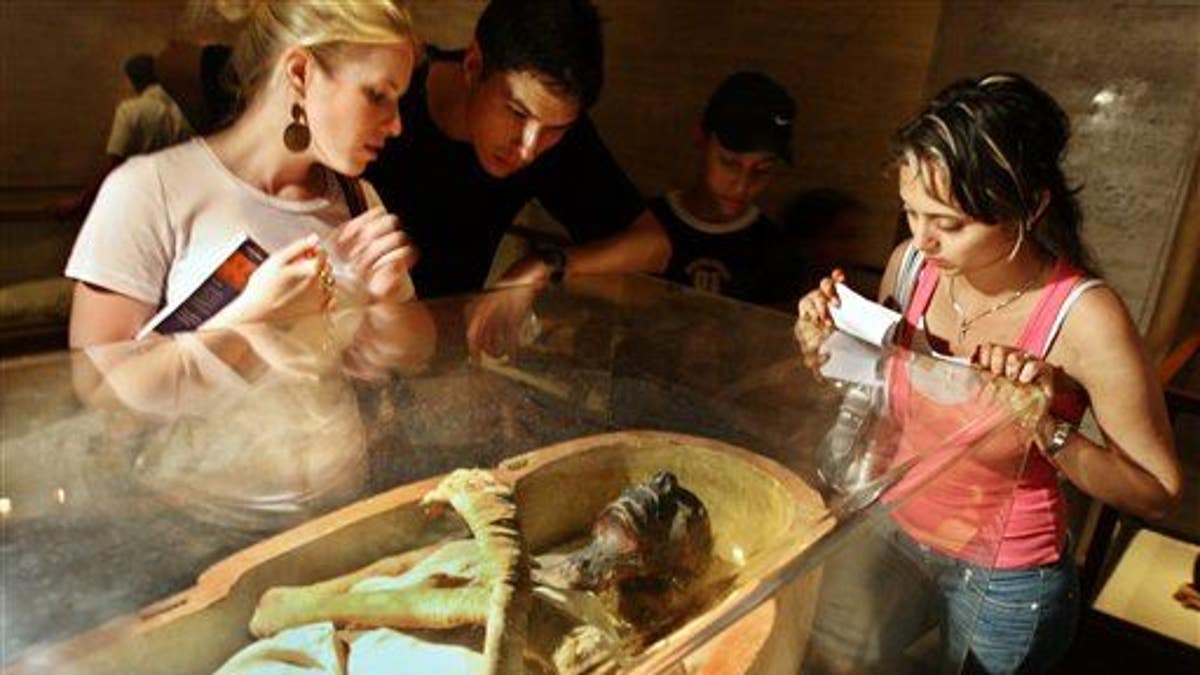
American tourists look at the mummy of Pharaoh King Ramses II, who ruled Egypt for about 66 years (1279-1213 BC). (AP Photo/Amr Nabil)
A new study has found that "pharaohs varied less in height than men of the common population," as a researcher explains—a rather plain statement with some pretty gossipy implications.
Swiss researcher Frank Rühli and his colleagues examined the height of 259 mummies—a group that included rulers and common folk—in a search for proof of incest, and they say they've found it.
Historical records point to marriage between the pharaohs and their sisters and cousins as a way to preserve a bloodline that originated with the gods, but as the researchers write in the American Journal of Physical Anthropology, there's a "present lack of larger, technically and ethically challenging genetic studies" on the subject (the challenging part, Discovery News reports, relates to concerns that DNA testing would damage the mummies' tissue).
As a "highly hereditable character," height could give evidence of this inbreeding. What the researchers found: Male royals were taller than common males, and female royals were shorter than their counterparts.
There was also much less variation in height, which suggests less genetic diversity and "provides evidence for inbreeding ... [though] there appears to be no correlation between the level of inbreeding and individual body height." Discovery News identifies the tallest pharaoh examined: Ramses II, who was at least 5.67 feet tall; his wife, Queen Nefertari-merj-em-Mut, was "outstandingly tall" compared to her peers at 5.41 feet.
(Another recent mummy study uncovered a "scandal.")
This article originally appeared on Newser: Scientists Find Proof of Pharaohs' Incest
More From Newser
